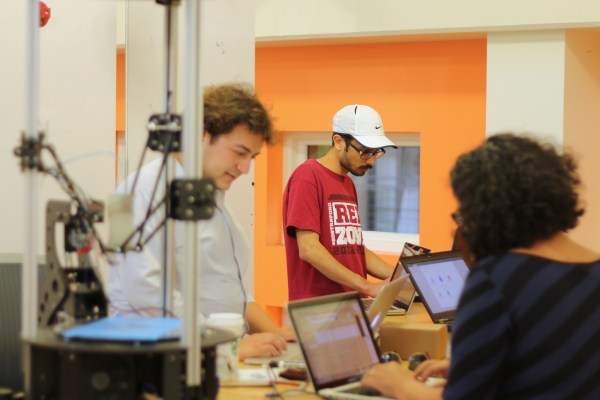Stanford students Alex Jais, Manal Dia, and Rohan Maheshwari have created a 3D printer that creates electronic traces – the flat metallic connections found on circuit boards. By replacing a standard plastic extruder on a 3D printer, the Rabbit Proto can “print” electronic wires inside a solid object, allowing you to build a sort of hybrid system that is both structural and conductive.
The project began in a design class where the team created a device with the ability to “print electronic ink on 3D surfaces.” By adding a simple extruder and conductive ink to a standard 3D printer, they were able to reduce the price of the kit down to $350 for a single extruder module or $450 for a dual extruder system that can be connected right to a standard 3D printer. The latter solution, called the Super Rabbit, allows you to print both plastic and the wires inside.
The team is also selling a $2,499 3D RepRap printer with the extruder already installed, which reduces the time necessary to get up and running. You can also simply download the Rabbit’s schematics and firmware to build your own.
Why is this tool important? Simply put, it allows for cohesive objects with embedded wiring to be created on a 3D printer in a few minutes. Electronics systems usually are built using PCBs that are placed inside hollow cases or encased inside epoxy. This solution would let makers create thinner and more robust electronics projects that require no internal wiring.
Still not convinced you need a 3D printer that can print wires right inside a casing? You can also use the printer to 3D print in peanut butter, a feature few of us have ever thought we’d need but may come in handy if we have a lot of sandwiches to make.
